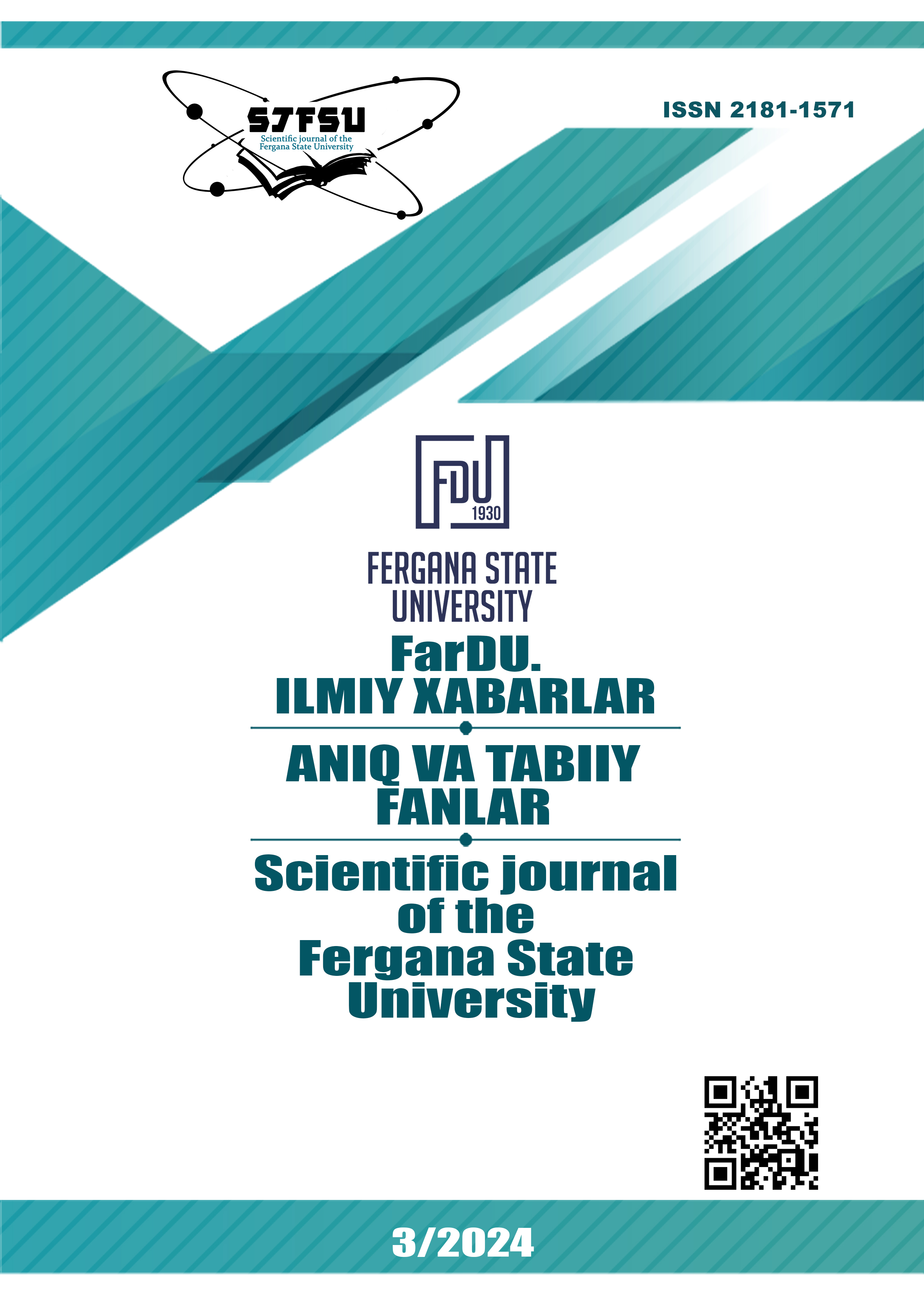DETERMINATION OF THE AMOUNT OF FLAVONOIDS IN PAULOWNIA AND ROSMARINUS PLANT LEAVES
Main Article Content
Abstract
In this study, the flavonoids contained in the leaves of Paulownia and Rosmarinus, which were introduced to our country and grow in the territory of Fergana region, were studied by the HLPC method. According to the analysis of the results of the studied plant samples, it was found that they contain 6 types of flavonoids.
Article Details

This work is licensed under a Creative Commons Attribution-NonCommercial-NoDerivatives 4.0 International License.
References
Pietta, P.G. Flavonoids as antioxidants. J. Nat. Prod. 2000, 63, 1035-1042.
Havsteen, B.H. The biochemistry and medical significance of the flavonoids. Pharmacol. Ther. 2002, 96, 67–202.
https://srcyrl.xjcistanche.com/news/basic-knowledge-of-flavonoids-and-the-effects-59143022.html.
Jakubowski, M.; Tomczas, A.; Jelonek, T.; Grzywiński, W. Wykorzystanie Drewna i Możliwości Uprawy Drzew z Rodzaju Paulownia. Acta Sci. Pol. 2018, 17, 291–297.
Xu, E.; Fan, G.; Niu, S.; Zhao, Z.; Deng, M.; Dong, Y. Transcriptome Wide Profiling and Expression Analysis of Diploid and Autotetraploid Paulownia tomentosa × Paulownia fortunei under Drought Stress. PloS ONE 2014, 9, e113313.
Icka, P.; Damo, R.; Icka, E. Paulownia tomentosa, a Fast Growing Timber. Ann. Valahia Univ. Targoviste Agric. 2016, 10, 14–19.
Islomov B.S., M.A.Hasanov. O‘simliklar introduksiyasi. Samarqand 2022.161 b.
Jordán M.J., Lax V., Rota M.C., Lorán S., Sotomayor J.A. (2013) Effect of bioclimatic area on the essential oil composition and antibacterial activity of Rosmarinus officinalis L. Food Control. 30: 463-468.

